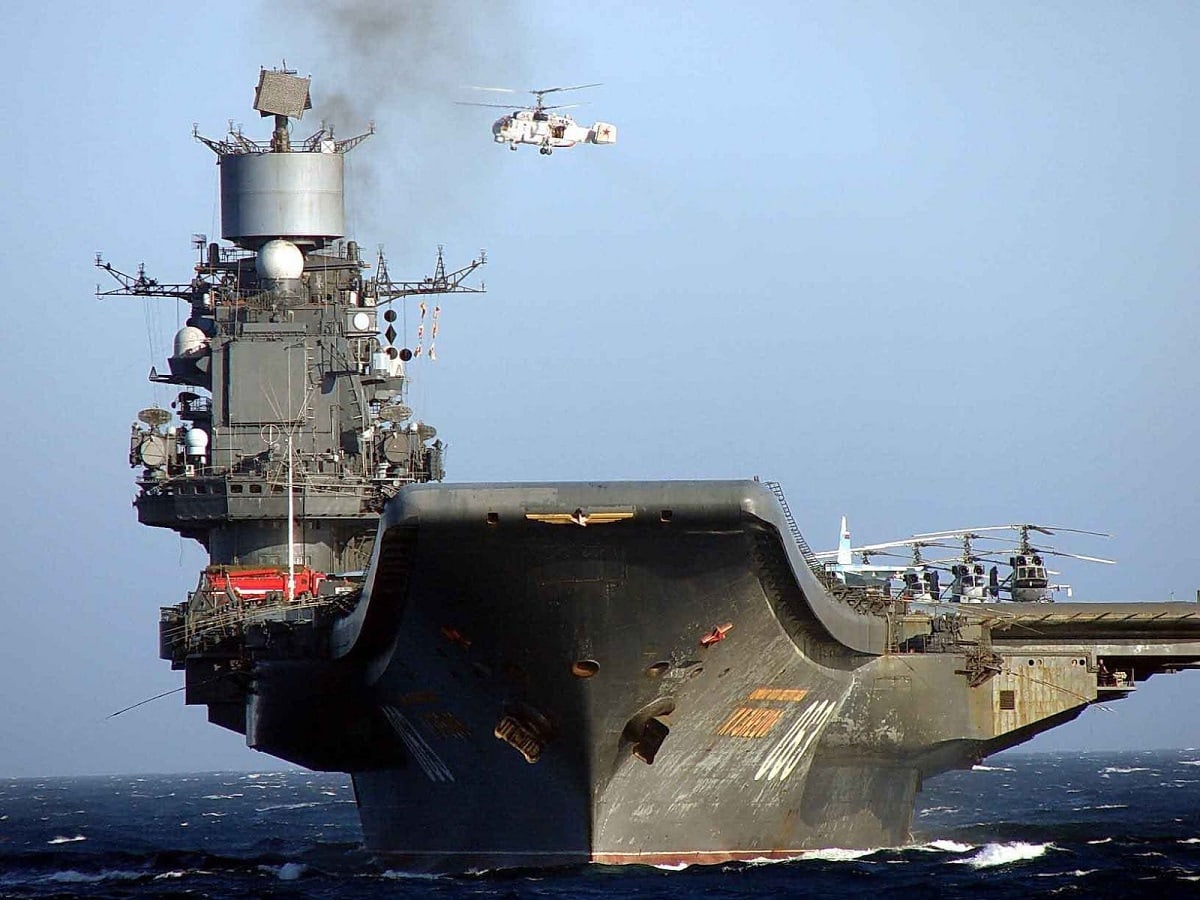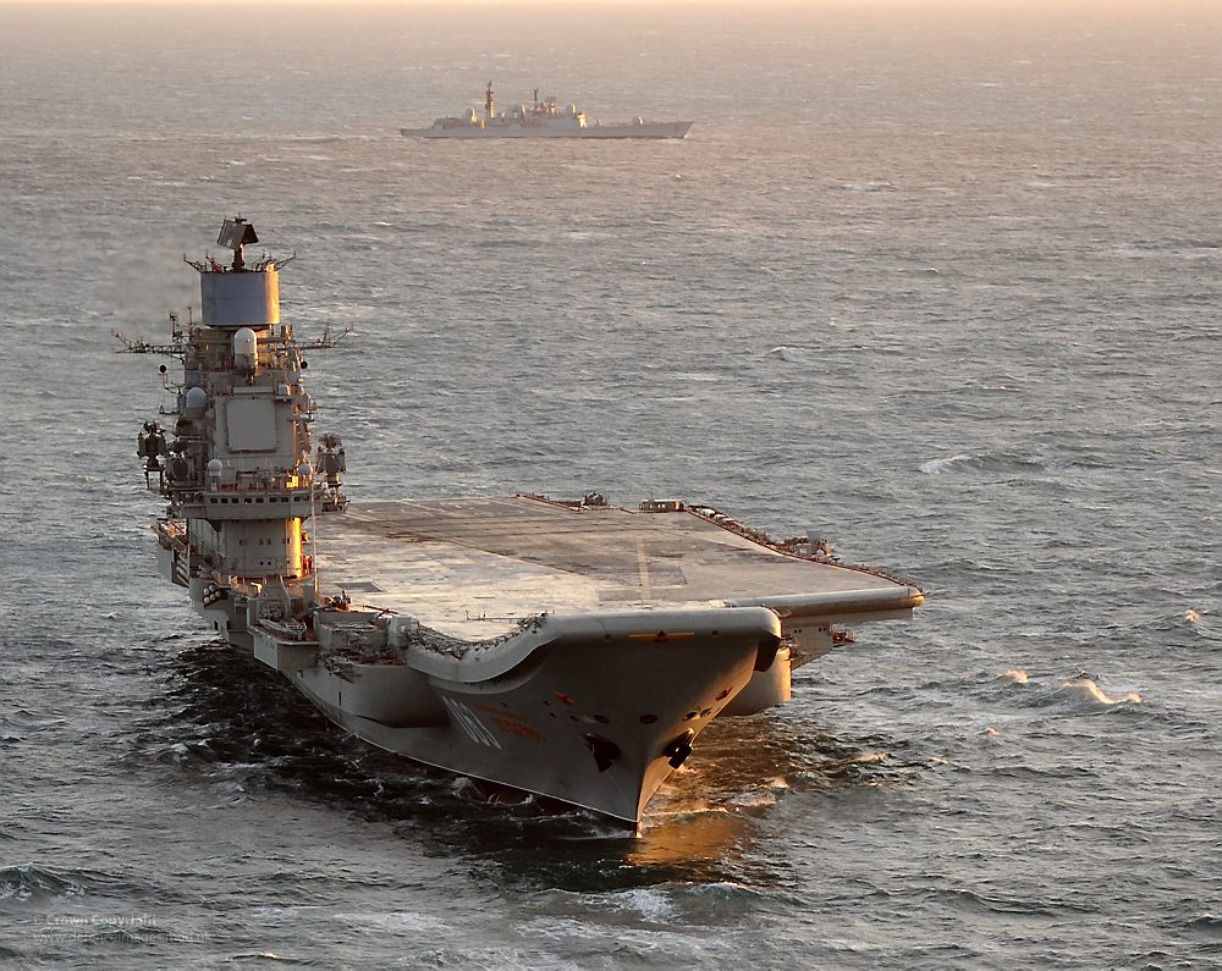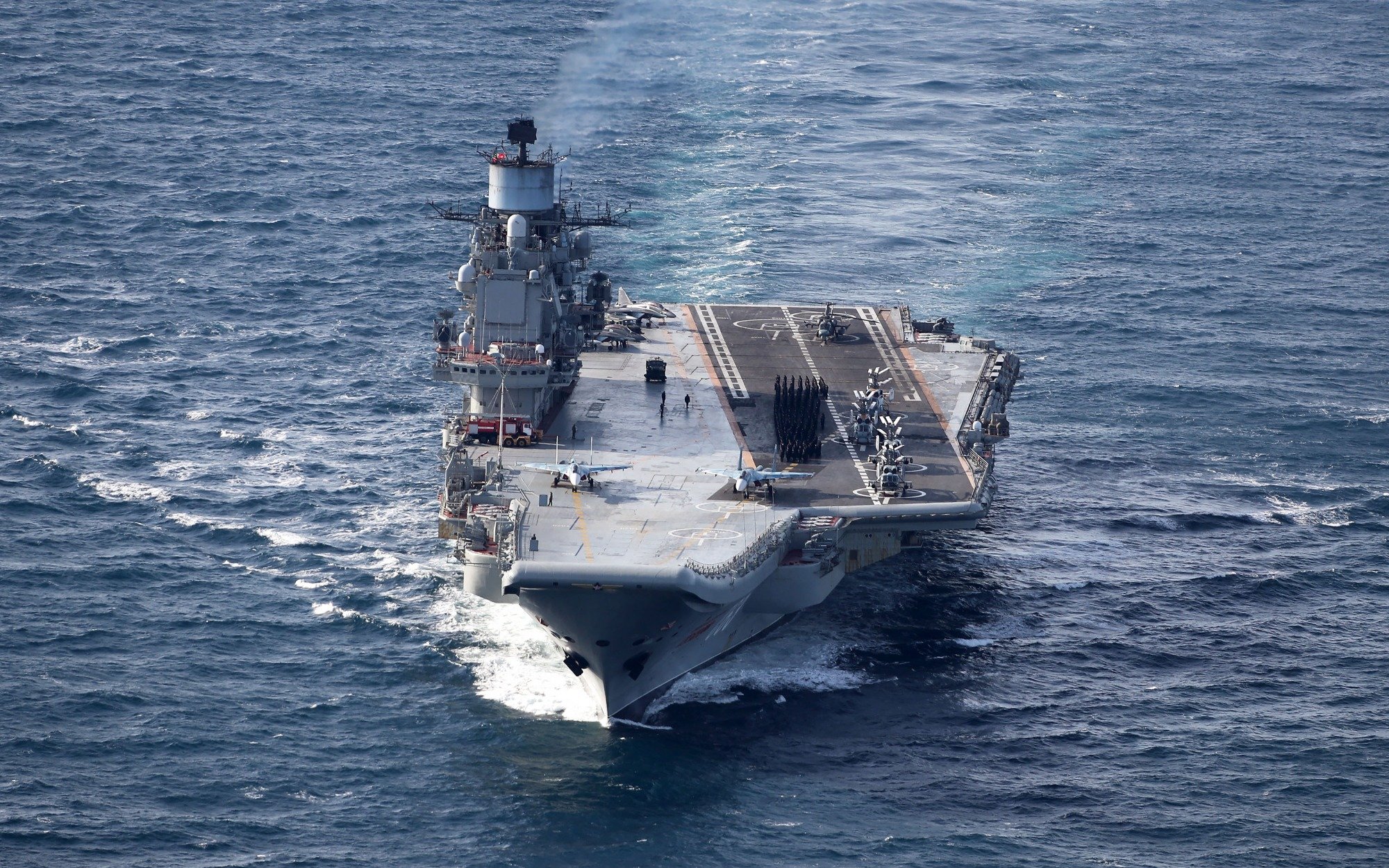Admiral Kuznetsov: Russia's Last Aircraft 'Hasn't Sailed in Years'
Russia’s only aircraft carrier, Admiral Kuznetsov, has faced persistent challenges, including fires, sinking drydocks, and severe delays, raising doubts it will ever return to service.
What You Need to Know: Russia’s only aircraft carrier, Admiral Kuznetsov, has faced persistent challenges, including fires, sinking drydocks, and severe delays, raising doubts it will ever return to service.

-Unlike U.S. nuclear-powered supercarriers, the Kuznetsov relies on outdated mazut fuel and lacks a proper catapult system, limiting its jet takeoff capabilities.
-Ongoing repairs are years behind schedule, and the war in Ukraine diverts resources from naval priorities, casting further uncertainty on its future.
-Although Russia officially states it aims to complete modernization, the ship’s long-troubled history suggests Admiral Kuznetsov may never sail operationally again.
Will Russia’s Struggling Aircraft Carrier Ever Sail Again?
Russia’s lone aircraft carrier, the Admiral Kuznetsov, has not sailed in years, raising the question: will she ever sail again?
Aircraft carriers, in a way, are like a metric measuring a nation’s general fortune. Why? Because aircraft carriers are complex; aircraft carriers are extremely expensive – both to produce and to maintain. Accordingly, only affluent nations, with resources to spare, can burden the cost of developing and fielding an aircraft carrier.
The US, the world’s most powerful nation, has eleven “supercarriers.” China, an ambitious and revisionist “up and comer” is working to expand their aircraft carriers fleet – and is on the verge of fielding a third carrier. India has two. Italy has two. The United Kingdom has two – but has decommissioned 41 – suggesting the island nation’s decline in global relevance. And Russia, a hollowed out paper tiger, has just the Admiral Kuznetsov, which many assume will never sail again.
The Admiral Kuznetsov is nothing like an American nuclear-powered supercarrier, like the Nimitz-class, or the Ford-class. Rather, the Kuznetsov is an obsolete and beleaguered ship, running on Mazut – an outdated petro-chemical that hasn’t been used regularly for fifty years. While Mazut was once the default fuel for naval energy (because of the high volume to energy ratio), the high-viscosity, tar-like substance creates a black-smoke byproduct when burned that clings to sailors clothing and skin. Regardless of the black-smoke-byproduct, Mazut is just inferior to nuclear power, which allows a vessel to operate indefinitely without refueling. The Kuznetsov can run for just 45 days at a time.
The Kuznetsov, emblematic of the flag that she sails under, has had a variety of troubles. “Admiral Kuznetsov has a problematic history,” Robert Beckhusen reported. ‘One seaman died when the carrier caught fire during a 2009 deployment to the med. During the same cruise, the flattop spilled hundreds of tons of fuel into the sea while refueling. Her steam turbines are so bad the ship has to be escorted by tugs in case she breaks down.”

More discouraging still, the Kuznetsov “is barely capable of doing what carriers are supposed to do: launch fighters. When she does, she uses a bow ramp instead of steam catapults, which forces reductions in planes’ takeoff weight and patrol time.” (The Kuznetsov’s strict takeoff weight limitations restrict the amount of ordnance and fuel a jet can carry, which reduces the jet’s offensive effectiveness and range.)
The Admiral Kuznetsov is not an especially sophisticated boat relative to modern standards. Measuring 1,000 feet long, the Kuznetsov has a 236 foot beam and a 23 foot draft. The boat displaces about 58,000 tons when fully loaded. For propulsion, the Kuznetsov relies on steam turbines, 8 turbo-pressurized boilers, four shafts, and four fixed pitch propellers – all of which can generate 2,011 horsepower, or 1,500 kilowatts, of power, and can accelerate the Kuznetsov to 29 knots.
Russia’s lone aircraft carrier sails with 1,690 crew members (significantly less than the 5,000 or so aboard a US Nimitz-class). The Kuznetsov can carry 18 Su-33s, 6 MiG-29Ks, four Ka-31s, and two Ka-27s.
For armament, the Admiral Kuznetsov is stocked with six AK-630 AA guns, eight CADS-N-1 Kashtan CIWS, 12 P-700 Granit SSM, and twenty four 8-cell 3K95 Kinzhal SAM VLS RBU-12000 USAV-1 ASW rocket launchers.

An Uncertain Future for a Trouble Aircraft Carrier
The Russian’s official story is that the Kuznetsov is currently being overhauled with a modernization program that is supposed to extend the boat’s life for another quarter century.
Initially, the Kuznetsov was to undergo the powerplant and electronics modernization at the 35th Ship Repair Plant in Murmansk, from 2018 to 2021. Obviously, the 2021 timeline has been busted – in part because in October 2018, the Kuznetsov was damaged when the PD-50 drydock sank, causing a 70-ton crane to punch a 200 square foot hole through the Kuznetsov’s deck.
Then, in 2019, a fire spread through the Kuznetsov. Two workers were killed, fourteen injured, and the Kuznetsov suffered several million dollars-worth of damage. In 2022, another fire broke out (without casualties). And in early 2023, repair work was suspended due to heavy fog in Murmansk. Clearly, the overhaul is not going well. Years behind schedule, the Russians have suggested that the Kuznetsov will return to service in 2024 – but that seems unlikely.
Russia is struggling under the weight of an attrition war with Ukraine. The enduring conflict – about two enter its third year – continues to suck Russian military resources. And the nature of the Russo-Ukraine War, a predominantly land-based conflict, means that funneling resources into the Admiral Kuznetsov likely won’t be a top Russian priority. So, the Kuznetsov is unlikely to sail again anytime soon.
And perhaps, the Kuznetsov will never sail again.
About the Author: Harrison Kass
Harrison Kass is a defense and national security writer with over 1,000 total pieces on issues involving global affairs. An attorney, pilot, guitarist, and minor pro hockey player, Harrison joined the US Air Force as a Pilot Trainee but was medically discharged. Harrison holds a BA from Lake Forest College, a JD from the University of Oregon, and an MA from New York University. Harrison listens to Dokken.
All images are Creative Commons and/or Shutterstock.


